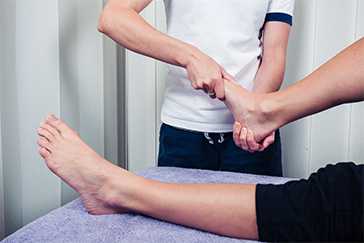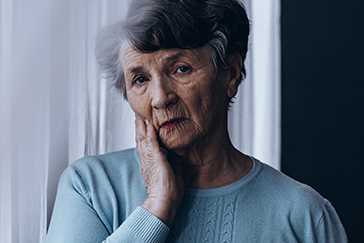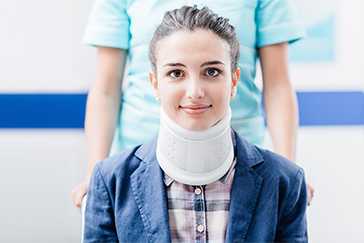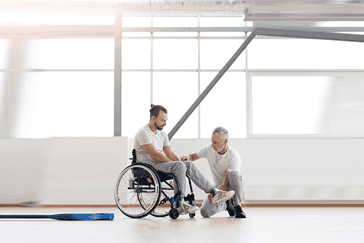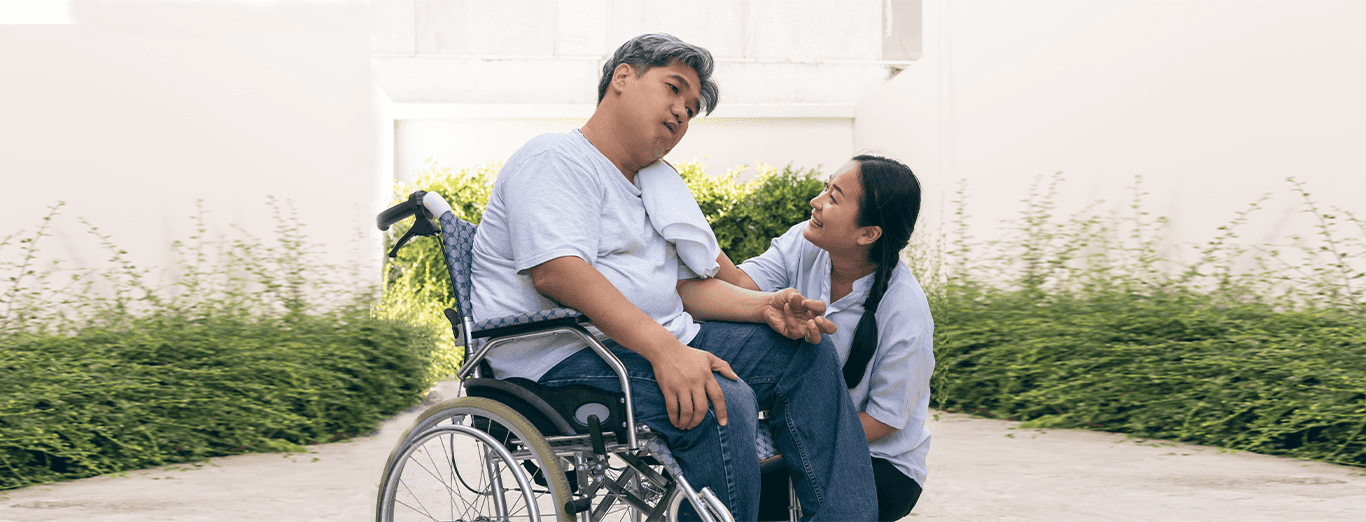
Expert Physiotherapy at Home
Certified physiotherapists visit you at home to provide focused, one-on-one care tailored to your needs. With no travel or waiting rooms, recovery happens in a setting that is comfortable, familiar, and built around your convenience.
Personalised Recovery Programmes
Every treatment plan is designed to suit your condition, goals, and pace. Our physiotherapists follow structured, evolving protocols to ensure consistent progress, with each session aligned to deliver meaningful results.
Trusted Physiotherapists. Real Results.
Our team comprises experienced, background-verified physiotherapists trusted by thousands of families. With a strong focus on safety, reliability, and clinical outcomes, we make recovery at home both effective and reassuring
Patient Testimonials
Portea Physiotherapists for Home Visits
Meet some of our experienced and dedicated healthcare professionals

Dr. Lokesh G
Physiotherapist
Specializations
Experienced in Neurological rehabilitation, Orthopaedic physiotherapy, and Paediatric care
Delivers structured, high-impact treatment plans across neuro, ortho, and paediatrics—ensuring safety, comfort, and measurable recovery at every stage.
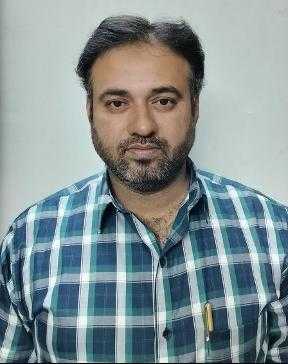
Dr. Mohammed Sarwar
Physiotherapist
Specializations
Experienced in Neurological rehabilitation, Adult physiotherapy, and Paediatric care
Combines deep clinical expertise with a compassionate approach, supporting both adults and children through neuro and physical rehabilitation that promotes long-term independence and recovery.

Dr. Nelapati Divya
Physiotherapist
Specializations
Skilled in Orthopaedic rehabilitation, Manual therapy techniques, and Paediatric physiotherapy
Brings a personalised, hands-on approach to healing—combining structural expertise with paediatric sensitivity to restore movement, relieve pain, and improve everyday function.

Dr. Naveen V
Physiotherapist
Specializations
Trained in Pain management, Cardiac and Orthopaedic rehabilitation, Neurological care, and Neural tissue mobilisation
Brings clinical precision and empathy together—designing science-backed recovery protocols for pain relief, nerve mobilisation, and cardio-neuro-ortho rehabilitation across all age groups

Dr. Miloni Savla
Physiotherapist
Specializations
Holds an MPT in Orthopaedics with a focus on Musculoskeletal rehabilitation and strength recovery
Delivers focused, movement-oriented therapy grounded in orthopaedic science—helping patients rebuild strength, restore function, and return to daily life with confidence
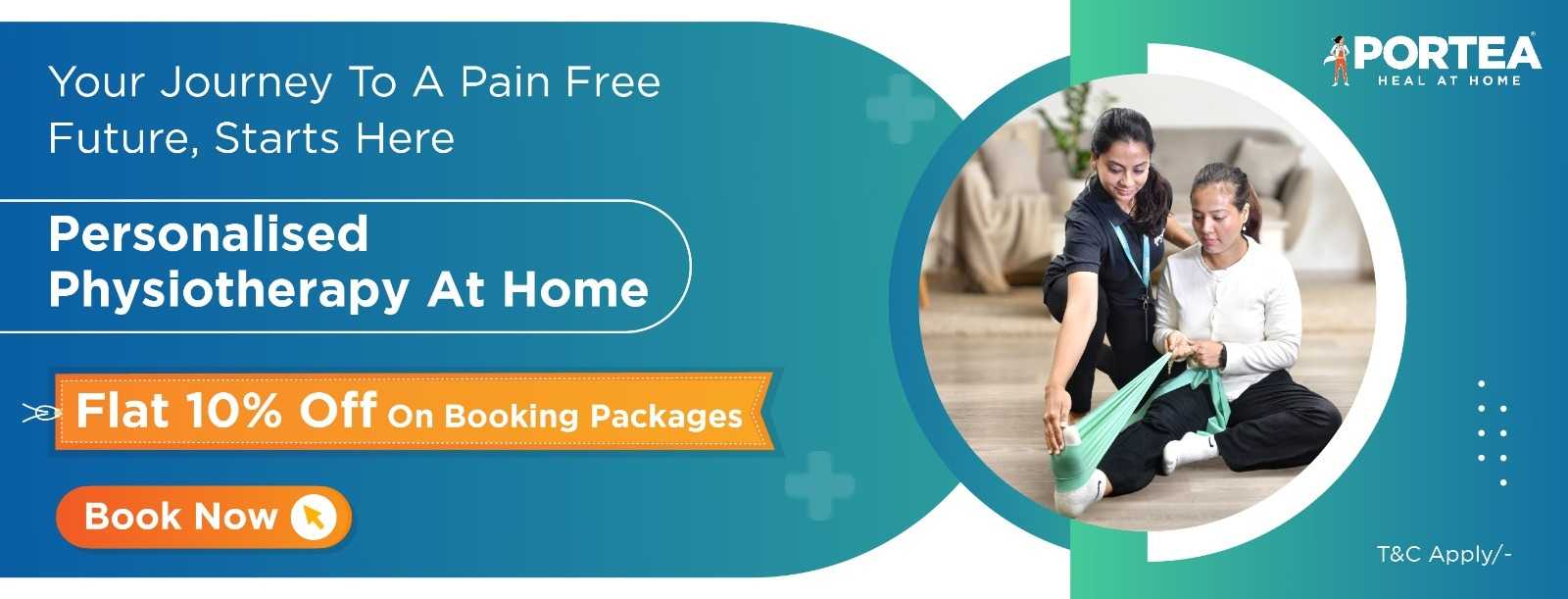
causes of stroke paralysis
There are three common types of strokes that can result in stroke paralysis:
The Transient Ischemic Attack (TIA): It is often termed as a mini-stroke or warning stroke, and occurs when blood flow to the brain is temporarily blocked. Since the blockage is brief, symptoms and effects tend to be short-lived.
Ischemic Stroke: This type of stroke occurs when a blood clot is blocking blood flow to the brain. Ischemic strokes may be caused by fatty deposits collecting inside a blood vessel, which is referred to as atherosclerosis. However, if the clot stems elsewhere in the body, often due to an irregular heart rhythm, an embolic stroke is usually the result. A TIA doesn’t need an emergency call for medical assistance, whereas the ischemic stroke demands nothing short of immediate attention for the purposes of reversing blood flow and minimizing the damage.
Hemorrhagic Stroke: This is a condition that occurs as a result of the bursting of a blood vessel in the brain, leading to spilling blood into the surrounding brain tissues; Hemorrhagic strokes are further classified into:
- Aneurysm: An area in a blood vessel with weakness balloons outward and may rupture, leading to a stroke.
- Arteriovenous Malformation (AVM): An abnormality in the formation of blood vessels can rupture, thereby causing a hemorrhagic stroke.
- Intracerebral hemorrhage: High blood pressure may weaken small blood vessels and lead to bleeding into the brain.
symptoms of stroke paralysis
Stroke paralysis often presents itself with a variety of symptoms dependent on the severity of the stroke and the areas of the brain affected. Some of the more common symptoms include:
1. Sudden Weakness or Numbness:
- This may be described as a loss of power or numbness mainly on one side of the body (the face, an arm, or leg).
- Likely fine or gross motor disturbances with the limbs.
2. Loss of Coordination or Balance:
- Problems with walking or keeping balance, or the ability to perform some fine motor tasks.
- Dizziness or spinning feeling.
3. Difficulty With Speech And Swallowing:
- Slurred or unclear speech.
- Difficulty in understanding what is heard or read.
- Difficulty swallowing (dysphagia).
4. Facial Drooping:
- One side of the face might droop or become numb so as not to smile symmetrically.
5. Blurred or Double Vision:
- Sudden visual disturbances in one or both eyes.
- Partial or complete vision loss.
6. Severe Headache:
- An abrupt, severe headache, normally involving little or no reason, would indicate a hemorrhagic stroke.
7. Muscle Spasms or Stiffness:
- Spasticity or spasms developing in the affected muscles upward.
8.Loss of Sensory Function:
- Inability to feel temperature, pain, or touch in the affected compartments.
These Might be of Interest
prevention of stroke paralysis
A healthy lifestyle and proper management of the risk factors responsible for stroke will prevent paralysis after stroke. Here are a few important ways to avert the dangers as summarized:
1. A Healthy Diet:
Food should be rich in green vegetables, fruits, whole grains, lean protein, and healthy fats.
Restriction of sodium, sugar, and unhealthy fats will reduce blood pressure and cholesterol levels.
2. Regular Physical Exercise:
Do at least 30 minutes of moderate exercise every day. Such mild forms of exercise as walking, swimming, or biking will improve cardiovascular health and lower stroke risk.
3. Control Blood Pressure:
Blood pressure is one of the leading causes of stroke. Therefore, keep checking your blood pressure regularly and take treatment as advised by a doctor to regulate it within healthy levels.
4. Control Diabetes:
You need to keep your blood sugar within normal limits through suitable diet control, medications, and physical exercise so as to minimize the risk of damage to blood vessels.
5. Maintain a Healthy Weight:
Obesity raises a very grave risk of stroke, as it is associated with hypertension, diabetes, and heart disease. Adopt healthy eating and an exercise routine as the only path to achieving a healthy weight.
6.Manage Stress:
Chronic stress reveals itself through unhealthy habits like overeating or smoking, both of which add to the stroke risk. Relaxation techniques, such as meditation or yoga, are recommended.
7. Regular Health Checkups:
Get checkups on a regular schedule to track and treat conditions like hypertension, high cholesterol, and atrial fibrillation, which are associated with a risk of stroke.
8. Follow Medical Recommendations:
If you are at high risk for stroke, do as your doctor advises and take any prescribed medication for blood pressure, cholesterol, or anti-clotting medications.
how can physiotherapy help after a stroke?
Physiotherapists often collaborate with a team of other professionals to address the various challenges that can arise after a stroke. This multidisciplinary team, often referred to as the stroke team, may include occupational therapists, speech and language therapists, doctors, nurses, and social workers.
Some physiotherapists specialize in treating conditions related to brain changes, such as stroke and neurological disorders like brain injuries. These specialists are known as neuro physiotherapists or neurological physiotherapists.
Neuroplasticity and Recovery
After a stroke, the brain cannot regenerate the damaged cells, but it can reorganize its remaining healthy cells to compensate for the loss. This ability is known as neuroplasticity. The rehabilitation you undergo after a stroke plays a crucial role in guiding this process, and your physiotherapist will provide expert guidance on how to relearn movements and restore function.
how long does stroke paralysis last?
The duration of stroke paralysis varies from one person to another depending on the peculiar rehabilitation journey of the stroke. There is no universal timeline for recovery.
The duration of paralysis varies according to the adherence to treatment and the individual’s response. Important are the severity of the stroke and the person’s engagement in the rehabilitation process.
With proper stroke rehabilitation, some patients may see improvement within six months, while others may take longer. Maintaining a focus and practicing regularly prescribed mental and physical exercises is essential for stroke recovery concerning paralysis.”
when do you need us?
Physiotherapy provided by experienced professionals is essential for treating stroke paralysis. Regular sessions can help restore mobility by enhancing muscle tone and encouraging movement.
When paralysis occurs after a stroke, it is important to begin movement as early as possible. Under the guidance of our expert physiotherapists, tailored exercises can strengthen muscles and play a critical role in the recovery process.
With our in-home physiotherapy services, we ensure exercises are performed correctly, minimizing the risk of complications and promoting safe and effective recovery.
how can we help?
After analyzing the medical history, our physiotherapists will determine the best stroke paralysis treatment. The treatment for your paralysis will be totally individualized with an eye toward faster recovery from the after-effects of the stroke with the right approach for you.
Through physiotherapy, the expertise will curate a plan to improve blood circulation and facilitate your recovery by gradually strengthening muscles from paralysis. A key role will be in order for them to assess your condition and, accordingly, suggest the best course for achieving fast and lasting recovery from stroke paralysis.
Summary: An overview of stroke paralysis can find the specific occasion for specialized intervention for recovery. Now that you are armed with the knowledge of how to tackle this challenging yet surmountable issue, facing the recovery with surety and confidence will be rated highly.
portea’s other physiotherapy services
FAQ’s
1. What is physiotherapy for stroke paralysis?
Physiotherapy for stroke paralysis focuses on restoring movement and function in individuals affected by stroke-induced paralysis. Treatment includes exercises to improve strength, coordination, and mobility, aiming to enhance independence and quality of life.
2. How can physiotherapy help in stroke recovery?
Physiotherapy aids in stroke recovery by promoting neuroplasticity—the brain’s ability to reorganize itself. Techniques such as constraint-induced movement therapy, mirror therapy, and electrical stimulation are used to stimulate the brain and improve motor function.
3. Is home-based physiotherapy effective for stroke paralysis?
Yes, home-based physiotherapy can be highly effective for stroke paralysis. Certified physiotherapists can design personalized rehabilitation programs that include daily exercises, mental practice, and the use of assistive devices, all within the comfort of your home.
4. What are the stages of stroke recovery?
Stroke recovery typically progresses through several stages:
- Flaccidity – Initial weakness or paralysis.
- Spasticity – Muscle stiffness and involuntary movements.
- Voluntary Movement – Gradual return of controlled movements.
- Complex Movements – Improved coordination and functional tasks.
- Normal Function – Restoration of daily activities.
Recovery varies by individual and depends on factors like stroke severity and early intervention.
5. How can I book physiotherapy for stroke paralysis at home?
Booking physiotherapy for stroke paralysis at home is straightforward. Reputable providers like Portea offer certified physiotherapists who can visit your home. You can schedule an appointment by visiting their website or contacting their customer support.
6. What tools and exercises are recommended for home rehabilitation?
Effective home rehabilitation tools include:
- FitMi – An interactive device that encourages movement through games.
- Mirror Therapy – Using visual feedback to stimulate brain activity.
- Electrical Stimulation Devices – To activate muscles and nerves.
Exercises focus on strengthening, coordination, and flexibility, tailored to individual needs.
Doctor Consultation
Nursing
Physiotherapy
Trained Attendant
Elder Care
Mother & Baby Care
Lab Tests
Medical Equipment
Speciality Pharma
Critical Care
